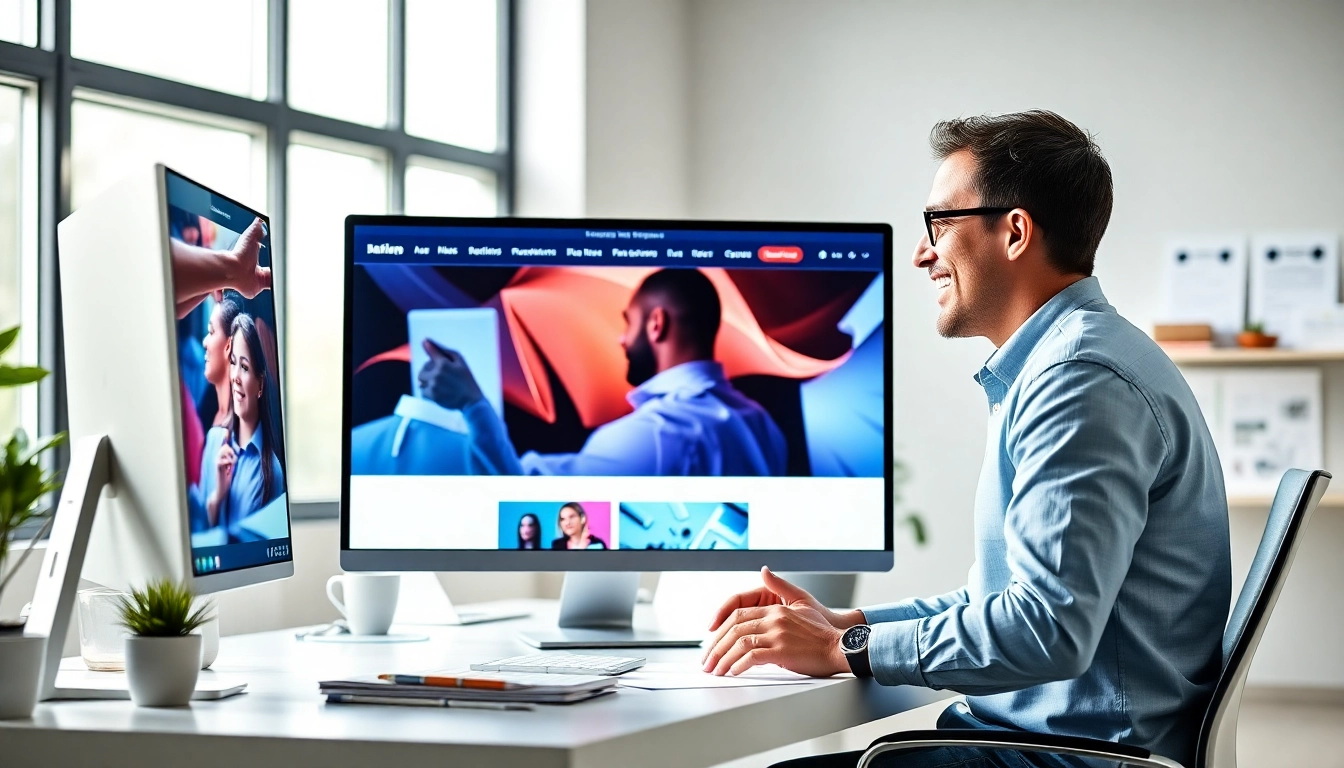Understanding Corporate Headshots
What Are Corporate Headshots?
Corporate headshots are specialized photographs that serve as a visual representation of a professional individual and are typically used in business contexts. They commonly appear on company websites, business cards, press releases, and LinkedIn profiles. A headshot is characterized by its focus on the subject’s face and upper body, aiming to convey professionalism, approachability, and credibility. These photographs are crucial for making effective first impressions in both physical and digital settings.
Benefits of Professional Headshots
Investing in professional corporate headshots comes with several advantages:
- Enhanced Professional Image: A well-crafted headshot improves the perception of your professionalism. It communicates seriousness about your career and business.
- Increased Trust: A clear, high-quality image fosters a sense of trust among clients and colleagues. It humanizes your brand and helps in forging connections.
- Brand Consistency: For businesses, consistent headshots across various platforms and among team members maintain a united brand image.
- Attracts Opportunities: A polished headshot can significantly boost your career prospects by enhancing your online presence, particularly on professional networking sites.
Types of Corporate Headshots
There are several types of corporate headshots, each catering to different needs and styles:
- Traditional Headshot: This classic format features the subject against a neutral background. The focus is solely on the individual and is commonly used in corporate environments.
- Candid Headshot: This type captures the subject in a more relaxed, natural pose, often in a workplace setting. Candid shots can convey a sense of authenticity.
- Creative Headshot: For industries like advertising and marketing, creative headshots allow for more artistic expression, incorporating unique backgrounds or props.
- Environmental Headshot: These photos depict the subject in a meaningful location related to their profession, thus telling a story about their work environment.
Preparing for Your Corporate Headshot Session
Selecting the Right Photographer
Choosing the right photographer can make all the difference in the quality of your corporate headshot. Factors to consider include:
- Portfolio: Review the photographer’s previous work to ensure their style aligns with your vision.
- Experience: Opt for someone who specializes in corporate headshots and understands the nuances of lighting, posture, and angles specific to professional photography.
- Reviews: Look for testimonials or reviews from previous clients to gauge their satisfaction and the photographer’s professionalism.
Choosing the Best Location
The location chosen for your headshot can significantly influence the final product. Consider the following:
- Studio vs. Outdoor: A studio provides controlled lighting and backgrounds, while outdoor settings can offer natural light and unique backdrops.
- Office Environment: Capturing headshots in a familiar environment can evoke a sense of authenticity and connection to your brand.
- Accessibility: Ensure that the location is easily reachable and convenient for you and the photographer.
Wardrobe Tips for Corporate Headshots
Your attire plays a crucial role in the outcome of your headshot. Here are some key considerations:
- Dress for Your Industry: Your attire should be appropriate for your profession. For corporate environments, business formal is usually the best choice.
- Color Matters: Solid colors typically photograph better than patterns. Choose shades that complement your skin tone and convey professionalism.
- Limit Accessories: While accessories can enhance your look, they should not distract from your face. Opt for minimalistic options.
The Process of Taking Corporate Headshots
Essential Equipment for High-Quality Images
For photographers, having the right equipment is crucial to capturing high-quality corporate headshots. Key tools include:
- Camera: A DSLR or mirrorless camera with a high-resolution sensor is ideal for detailed images.
- Lens: A lens with an aperture of 50mm or greater allows for a shallow depth of field, which blurs the background and emphasizes the subject.
- Lighting: Natural light is great, but softbox lights or ring lights can provide consistent and flattering illumination.
Posing Techniques to Look Your Best
Posing can dramatically affect how you are perceived in your headshot. To achieve the best results:
- Posture: Stand or sit with a straight posture, shoulders relaxed, and chin slightly raised to convey confidence.
- Angles: Turn your body slightly to the side instead of facing the camera directly, which can create a more dynamic and flattering shot.
- Facial Expressions: Aim for a genuine smile or neutral expression that aligns with your professional persona; think of something that makes you happy to evoke natural smiles.
Lighting Considerations for Stunning Shots
Lighting is one of the most critical factors in photography. Here are some tips to consider:
- Golden Hour: Shooting during the golden hour (shortly after sunrise or before sunset) offers soft, warm light that enhances skin tones.
- Use Soft Lighting: Avoid harsh shadows by using diffused light sources or reflectors to soften the illumination on your face.
- Control Shadows: Position lights effectively to ensure even lighting across the face, minimizing shadows that can obscure features.
Post-Session Edits and Delivery
Understanding Retouching Services
Post-session edits are crucial for achieving impeccable headshots. A professional photographer should offer:
- Basic Retouching: This includes adjusting brightness, contrast, and color balance to enhance the overall look of the image.
- Skin Retouching: Minor blemishes or imperfections can be edited out while maintaining a natural appearance.
- Background Enhancement: Backgrounds can be blurred or adjusted to ensure the focus remains on the subject.
Getting the Final Images
After the editing process, you will typically receive the final images in multiple formats:
- High-Resolution Files: These are suitable for print materials such as brochures and business cards.
- Web-Optimized Files: Lower resolution files designed for digital use, ideal for websites and online profiles.
- Image Rights: Confirm your usage rights regarding the headshots for legal protection and clarity in professional settings.
How to Use Your Corporate Headshots
The final headshot is only as good as how you utilize it. Consider the following applications:
- LinkedIn Profile: Use your headshot as the primary image for your profile, ensuring it matches the professionalism of your accomplishments.
- Company Website: Feature your image on the “About Us” section or team page to create a personal connection with your audience.
- Business Cards: Including your headshot on business cards can enhance personal branding when networking.
Common Pitfalls to Avoid
Typical Mistakes in Corporate Headshots
To achieve an outstanding corporate headshot, it’s essential to avoid these common pitfalls:
- Poor Lighting: Shadows or glare can ruin an otherwise great picture; always prioritize good lighting conditions.
- Distracting Backgrounds: Ensure that your background is simple and does not divert attention from the subject.
- Over-Editing: While retouching is important, overdoing it can lead to unnatural-looking images.
Overcoming Wardrobe and Posing Issues
Wardrobe choices and posing can significantly impact the final headshot. To tackle these issues:
- Testing Outfits: Before the shoot, try wearing your chosen outfit and take sample pictures to see how it translates in photographs.
- Practice Poses: Spend time in front of a mirror to identify your best angles and comfortable facial expressions.
Making the Most of Feedback
Receiving and processing feedback is integral to enhancing your headshot experience:
- Consultation: Discuss with your photographer your desired image and any revisions needed post-session.
- Peer Feedback: Show selected images to trusted colleagues for their opinions before finalizing your choice.



